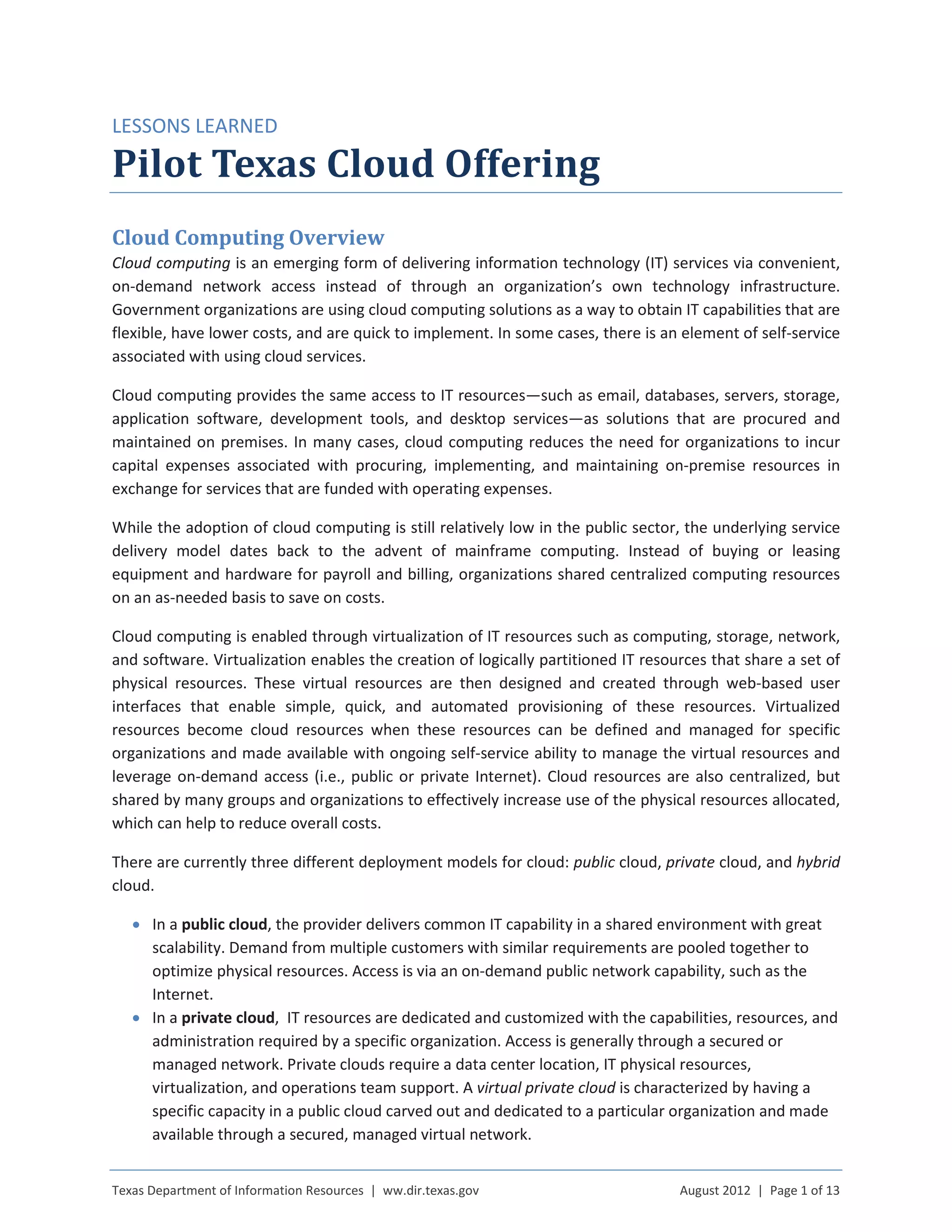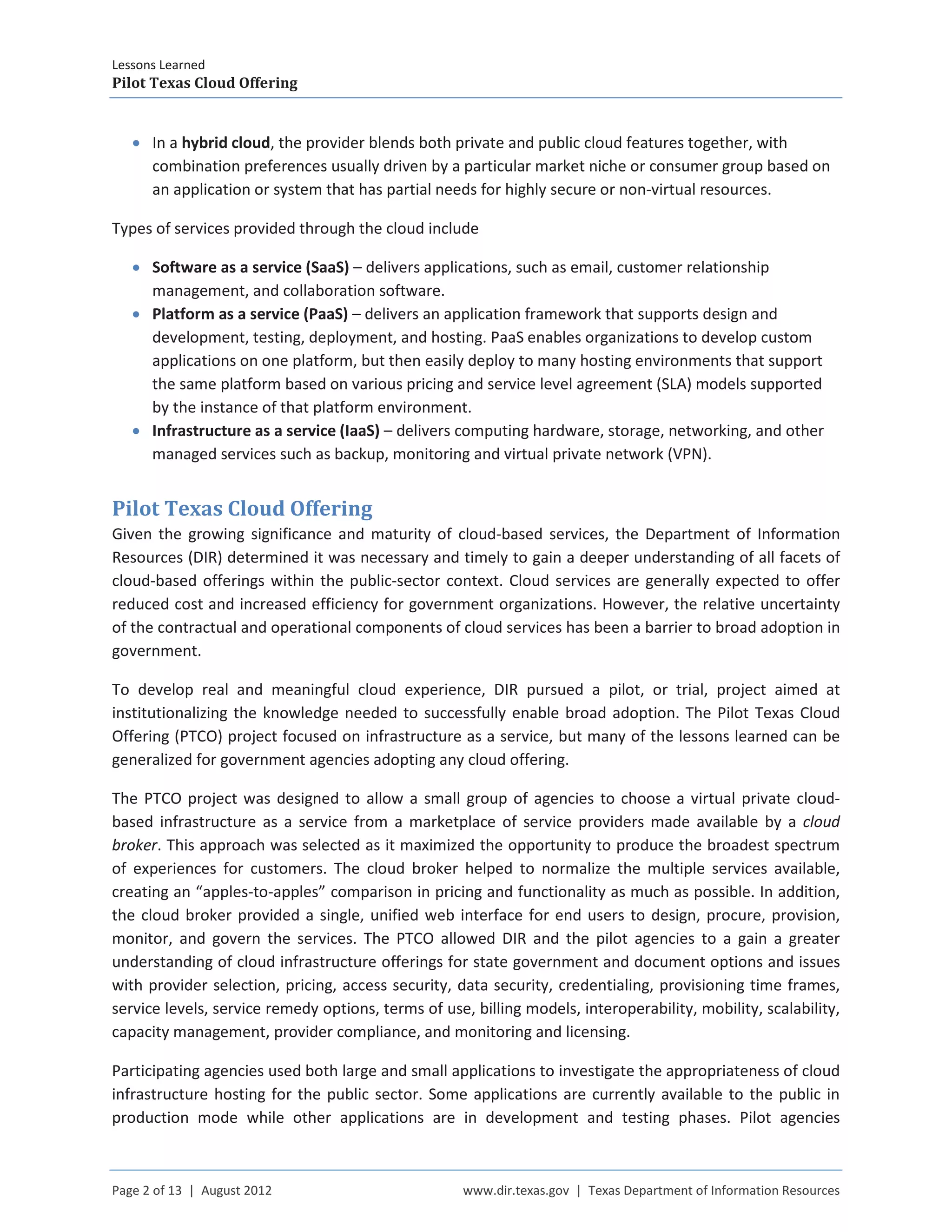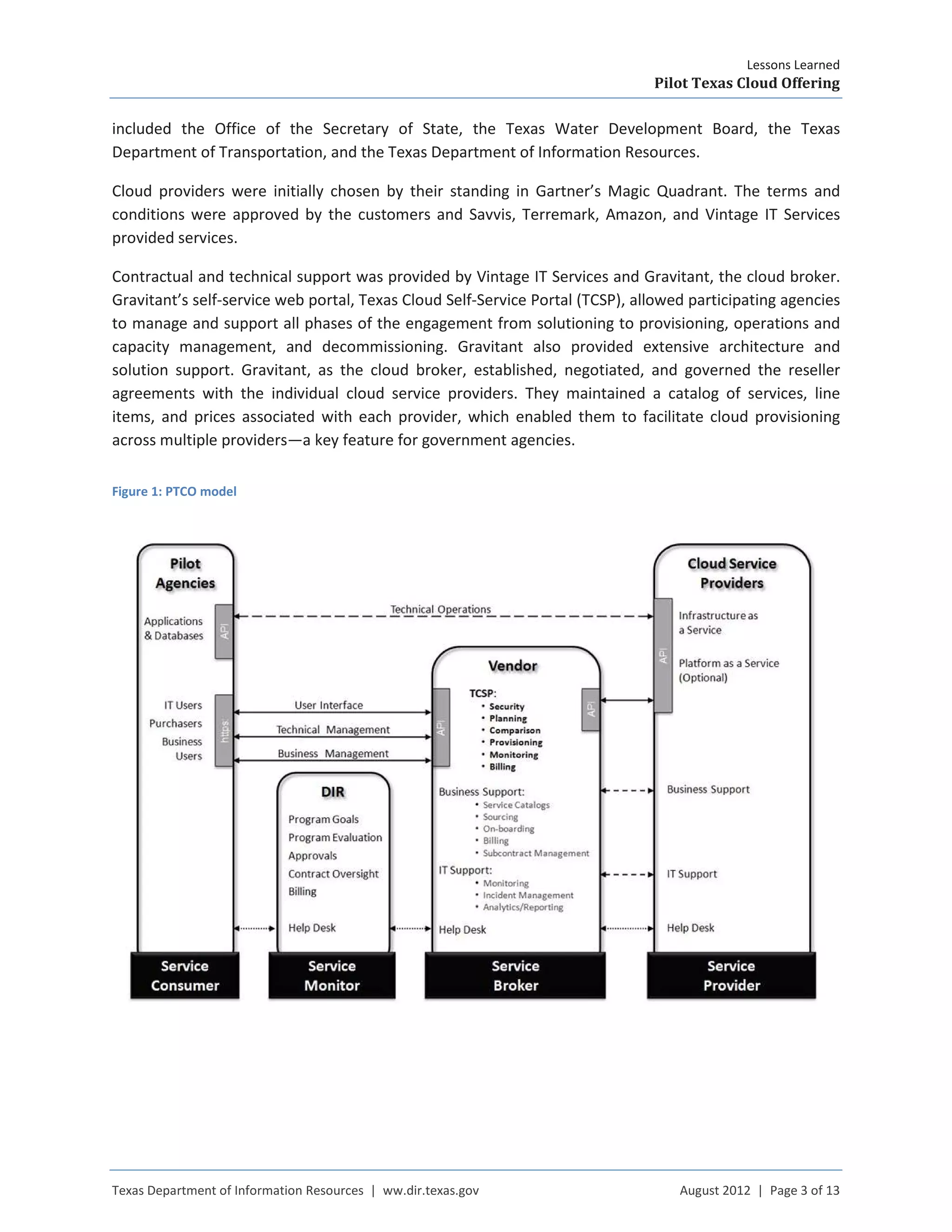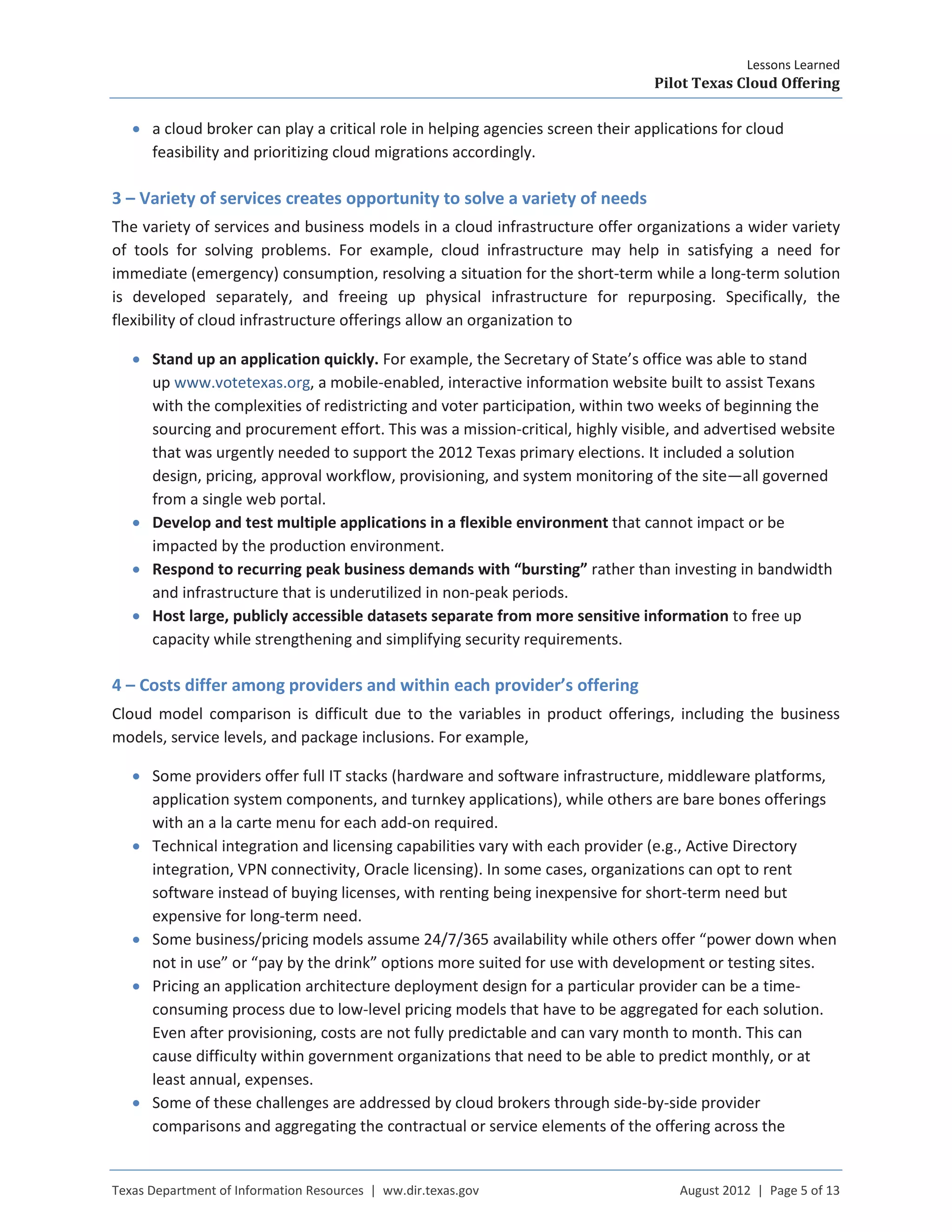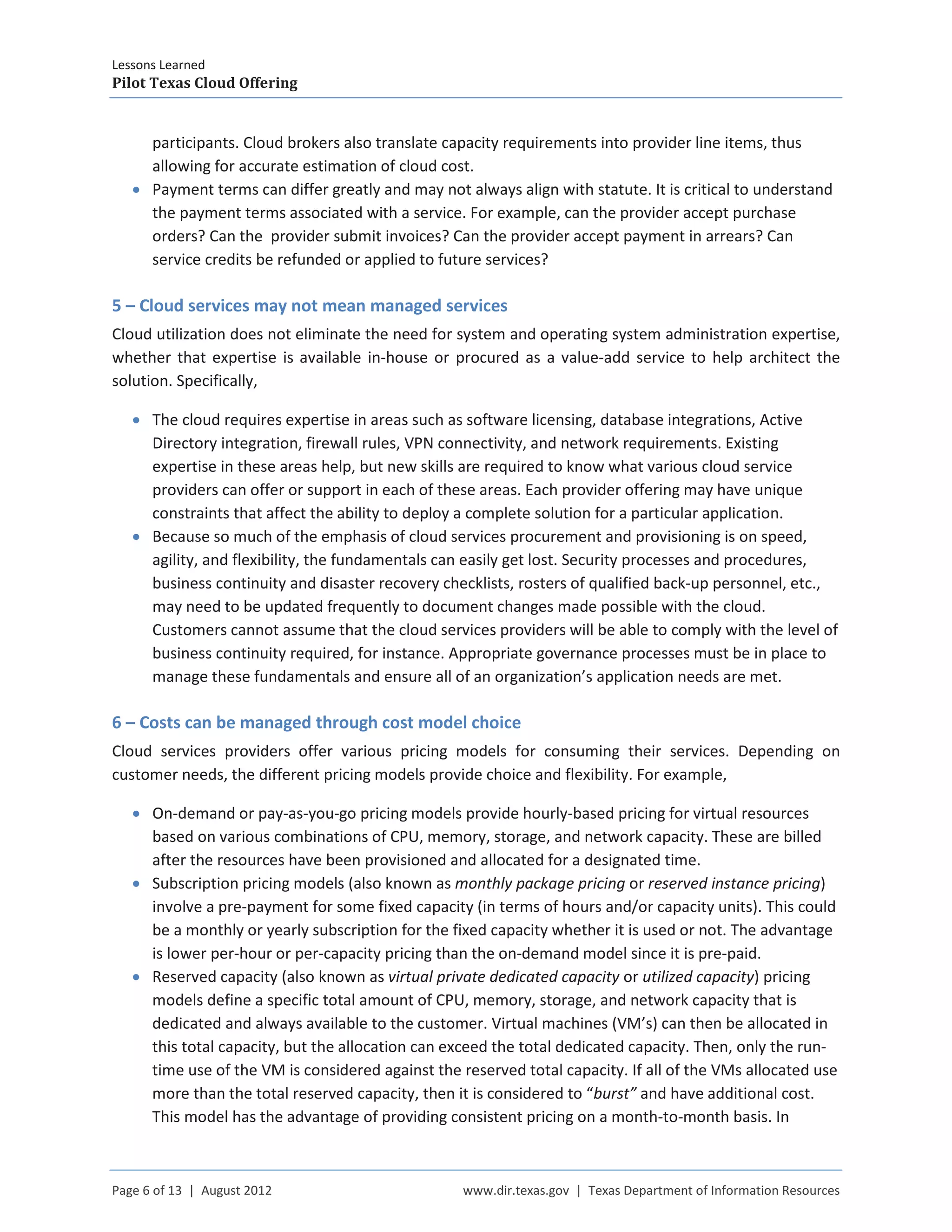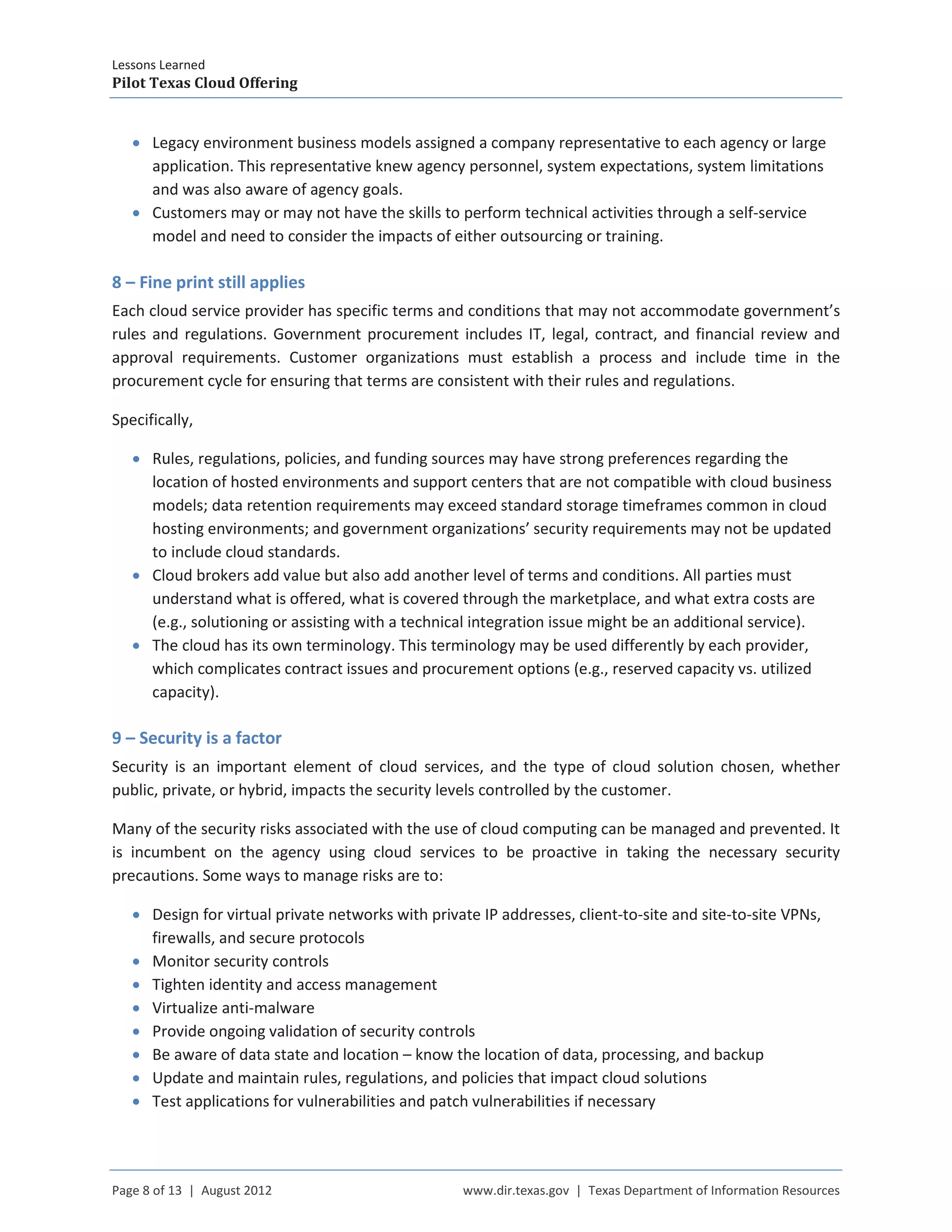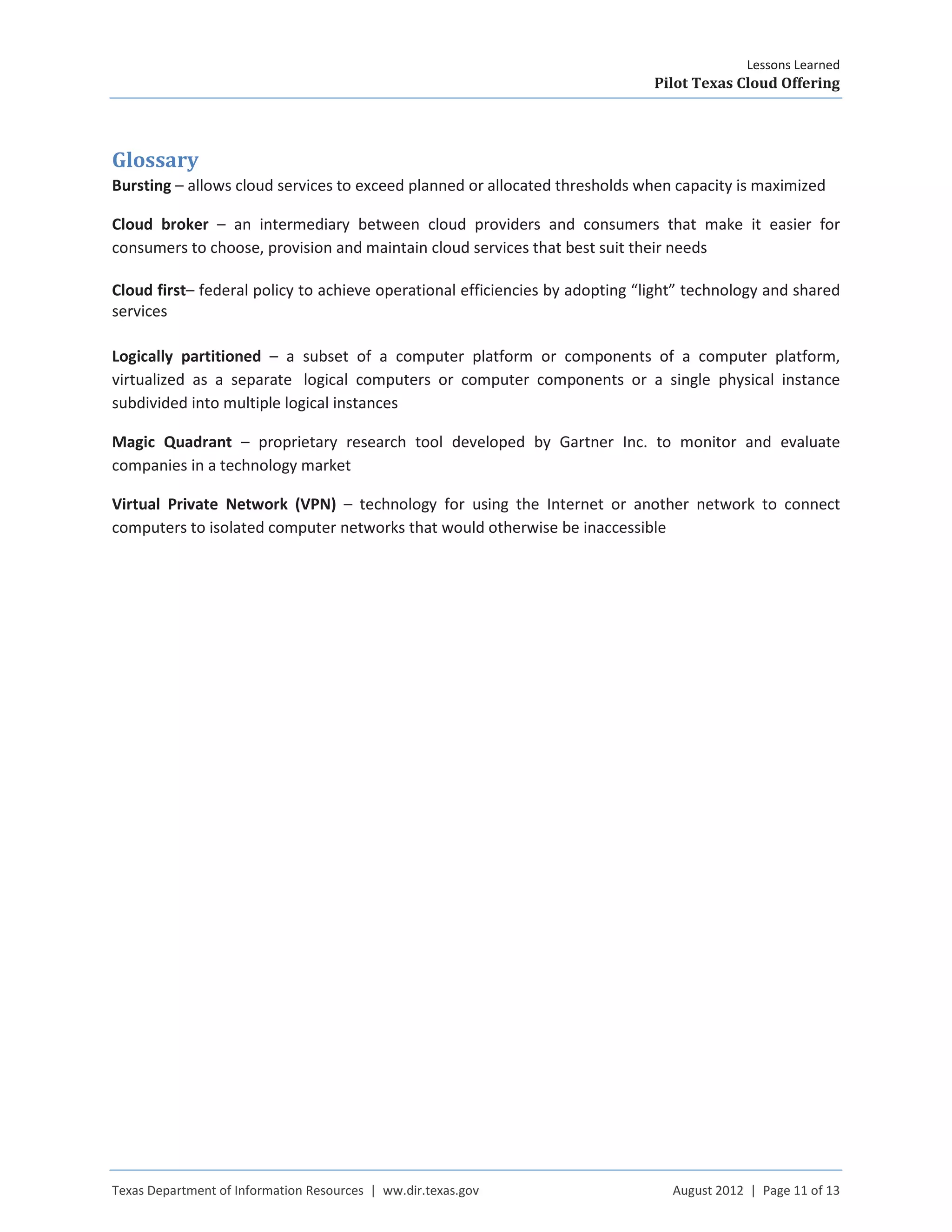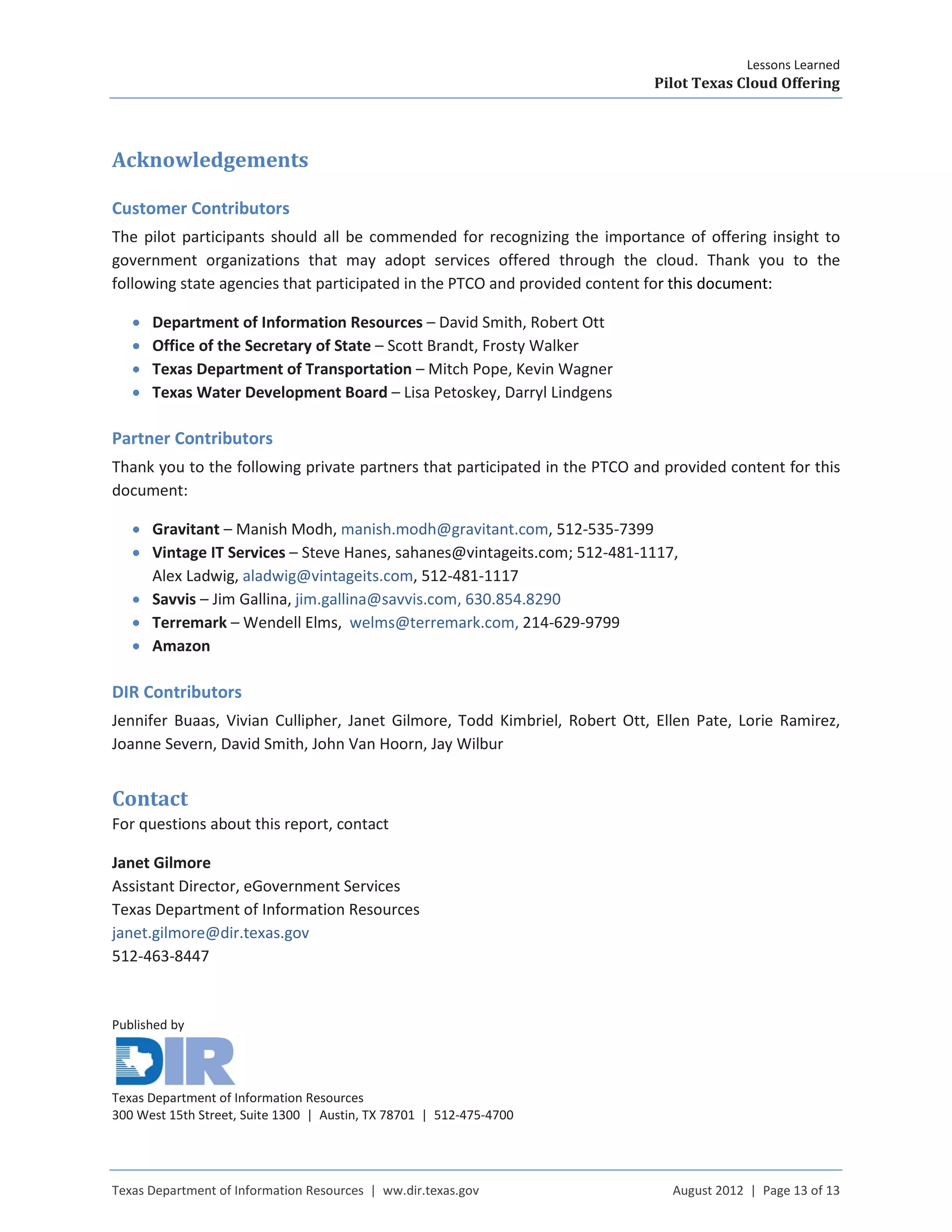The document discusses lessons learned from Texas' Pilot Texas Cloud Offering project. It provides an overview of cloud computing and describes the goals and structure of the pilot project. Key lessons learned include: 1) Not all applications are well-suited for the cloud. 2) The variety of cloud services and needs creates complexity but also opportunities. 3) Costs can be managed through choices like pricing models but vary between providers and offerings.
